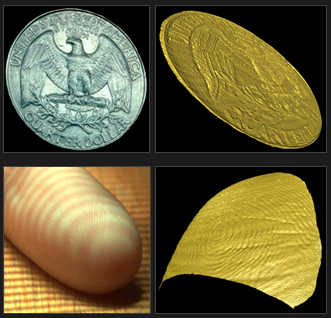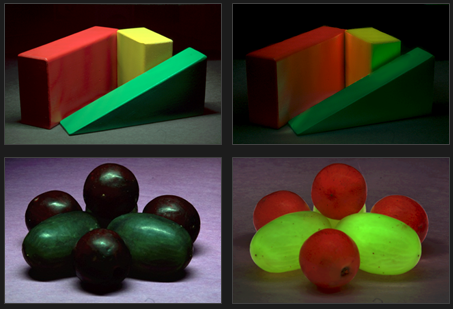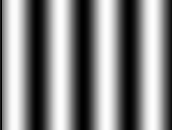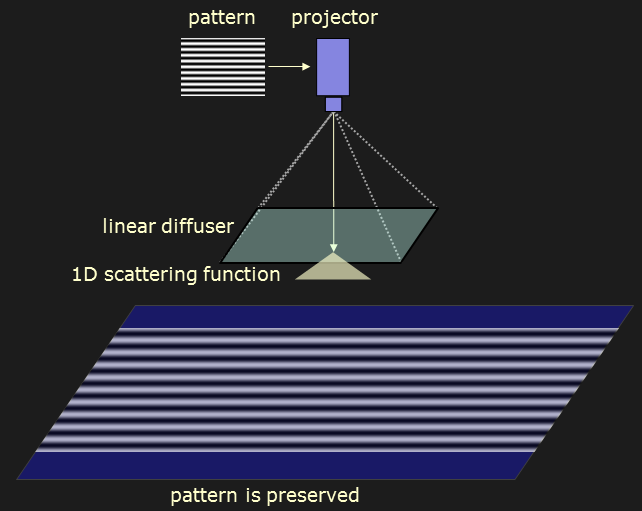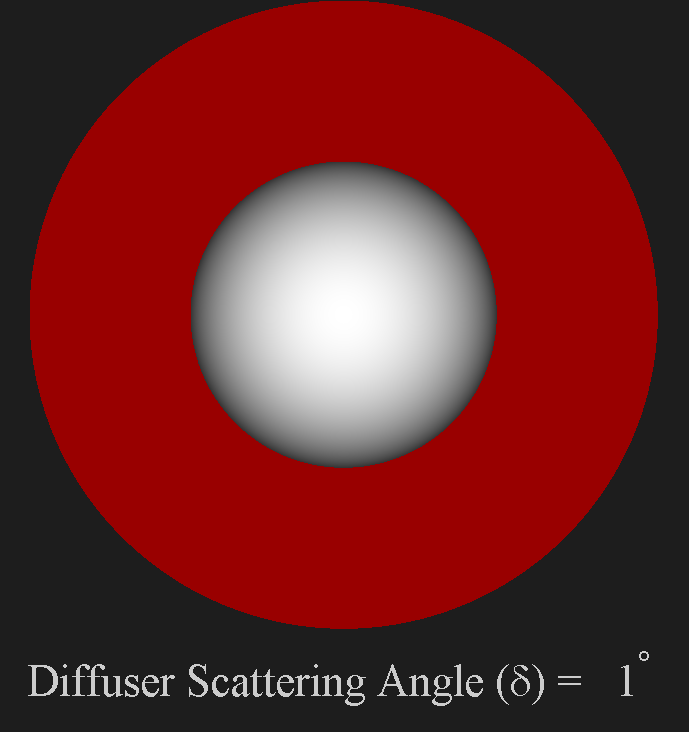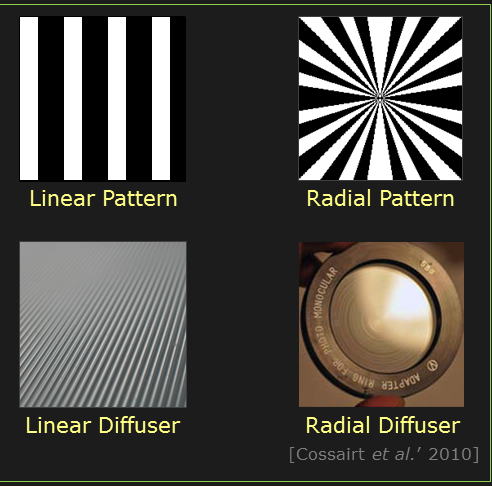Diffuse Structured Light |
 |
|
Today, structured light systems are widely used in applications such as robotic assembly, visual inspection, surgery, entertainment, games and digitization of cultural heritage. Current structured light methods are faced with two serious limitations. First, they are unable to cope with scene regions that produce strong highlights due to specular reflection. Second, they cannot recover useful information for regions that lie within shadows. Examples are shown in the above figure - a metal hemisphere (specularities) and a cube (shadows). We propose diffuse structured light, a simple but effective approach to mitigate both specularities and shadows in structured light methods. The key observation is that many structured light methods use illumination patterns that have translational symmetry, i.e., two-dimensional patterns that vary only along one of the two dimensions. We show that, for this class of patterns, diffusion of the patterns along the axis of translation can mitigate the adverse effects of specularities and shadows, while maintaining the illumination coding. Our approach can be used in several structured light applications; we show results for two - 3D scanning using sinusoidal phase shifting and separation of direct and global components of light transport using high-frequency binary stripes. |
Publications"Diffuse Structured Light," |
Galleries |
Images |
Slides |
Related Projects |
Usage and Licensing InformationThe techniques and software presented on this webpage can be used freely for non-commercial research and educational purposes. For commercial usage and licensing information, please contact Columbia Technology Ventures (E-mail: techtransfer@columbia.edu; Web site: http://techventures.columbia.edu/). |
